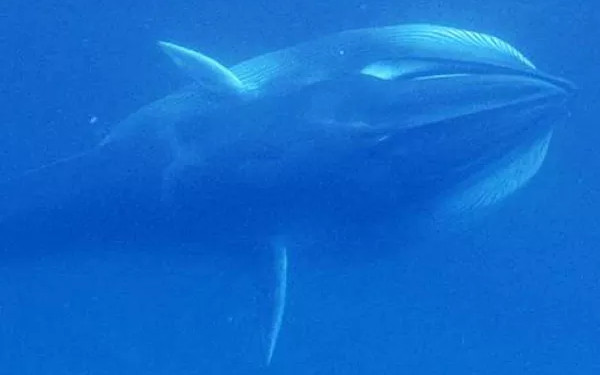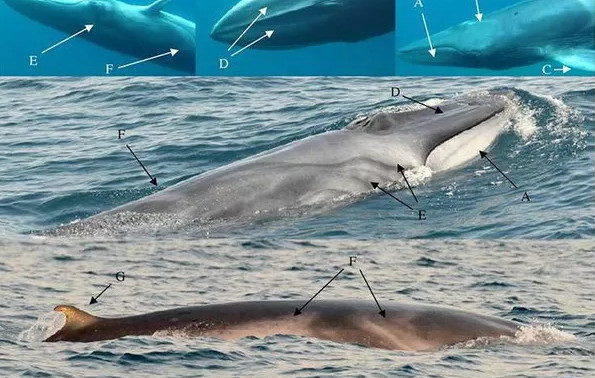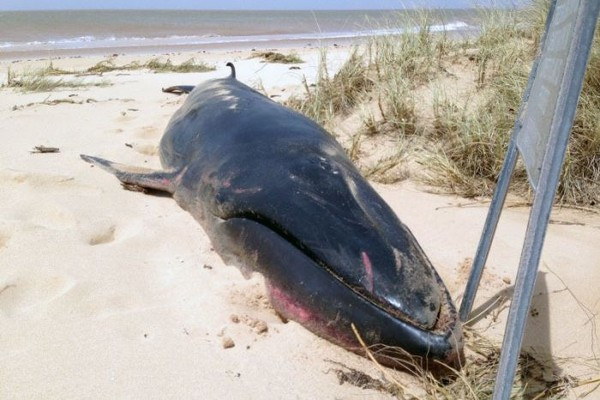The first film about the rarest whale on the planet
Omura whale is considered one of the rarest species of the planet because they always seek to avoid humans.
The first film about Omura whale
Recently, international biological researchers of the Wildlife Conservation Society have published a film back to one of the planet's most rare whales: Omura Whale.
Since we were officially recognized as a new species in 2003, we have very little information about this whale. Omura is a species of whale belonging to the group of gray back whales (or humpback whales) . This group has a very unique characteristic, that is, their jaws are like comb teeth . They smoke a large amount of seawater, then release it through the mouth and retain the food inside.

Omura whales - one of the hardest caught whales today.
For decades, biologists have confused Omura whales with Bryde whales, because they live in the same waters and are quite similar in appearance. Even the Omura whale team had mistaken two species together, until it realized a separate sign: Omura whale has a white right jaw, while the other half is darker, copper. they are also smaller in size. So far, only 8 Omura whales have been caught in Japan in the 1970s.

Scientists say Omura whales are difficult to observe, as they always seek to avoid humans. The "starring" whales in the film are found in the Indian Ocean, near the island of Madagascar. In total, they recorded 44 footage of this whale, allowing scientists to understand more about how they hunt, how to communicate, and even mating. In addition, the footage can reveal their preferred habitat - thought to be shallow shallow waters.

A dead Omura whale washed ashore in Australia.
According to Salvatore Cerchio, who led the study, "For many years, Omura whales have appeared several times but cannot be verified. They appear too far away, and it is difficult to observe them in the middle of the sea because The whale is quite small - only about 10 - 11.5 meters long - and they don't spray as hard as other whales. "
Currently, there is still very little information about this whale, like their number in the wild. Scientists are continuing to plan to return to this sea, hoping to gather more data about the planet's most rare rare whale.
If you are curious about this whale, please watch the video below:
- For the first time in history, we have earned the singing of the world's rarest whale
- The least known close-up picture of the whale in the world
- The mother of the world's rarest whale died of stranding
- The mystery behind the lobster during the rare extreme is causing a storm?
- For the first time recorded images of the planet's most mysterious creature
- The rarest animal on the planet suddenly appeared
- Search for the whale 'Forever Alone' most on Earth
- The biggest brain on the planet of sperm whale
- Video: The fishermen build themselves sleeping in the seabed
- Three-dimensional image of the Sun.
- Heroic scene of massacre of whales, sea water changed color
- Use robots to study an endangered whale
 Surprised: Fish that live in the dark ocean still see colors
Surprised: Fish that live in the dark ocean still see colors Japan suddenly caught the creature that caused the earthquake in the legend
Japan suddenly caught the creature that caused the earthquake in the legend A series of gray whale carcasses washed ashore on California's coast
A series of gray whale carcasses washed ashore on California's coast Compare the size of shark species in the world
Compare the size of shark species in the world The world's most mysterious Omura whale discovered in the sea of Thailand
The world's most mysterious Omura whale discovered in the sea of Thailand  Is the blue whale's heart really the size of a car?
Is the blue whale's heart really the size of a car?  Killer whale rips open whale shark's belly to get liver
Killer whale rips open whale shark's belly to get liver  Whale sets record by swimming across 3 oceans to find a mate
Whale sets record by swimming across 3 oceans to find a mate  Tactics that help killer whales hunt the largest fish on the planet
Tactics that help killer whales hunt the largest fish on the planet  World's rarest whale carcass washes ashore in New Zealand
World's rarest whale carcass washes ashore in New Zealand 